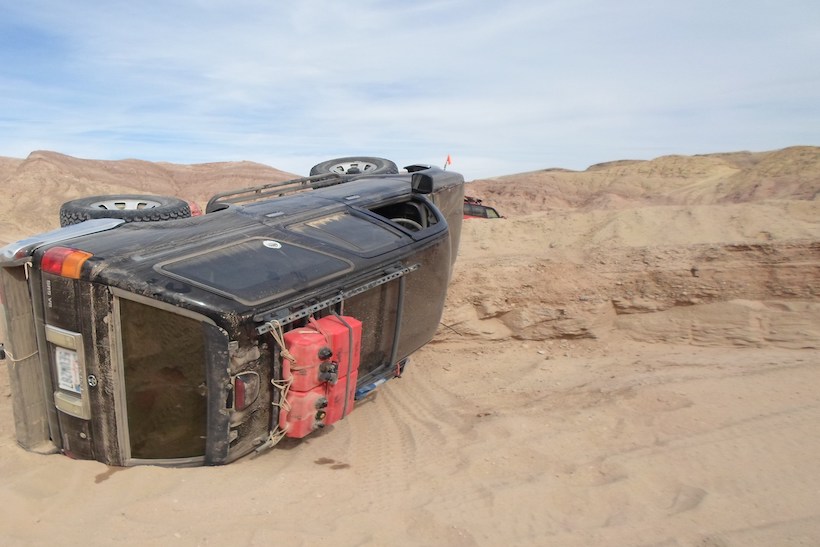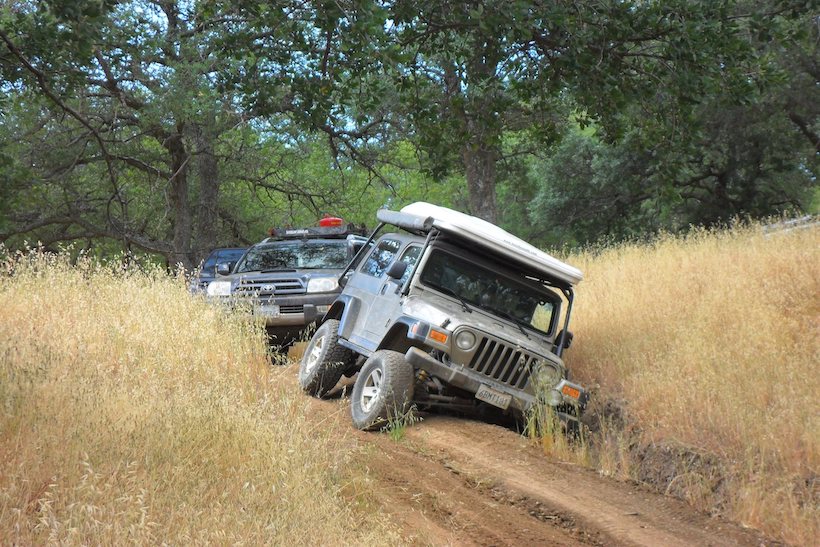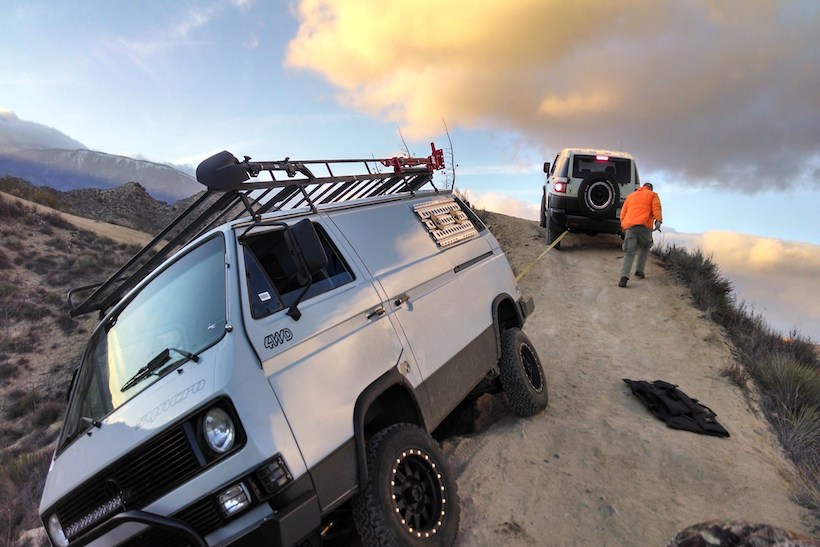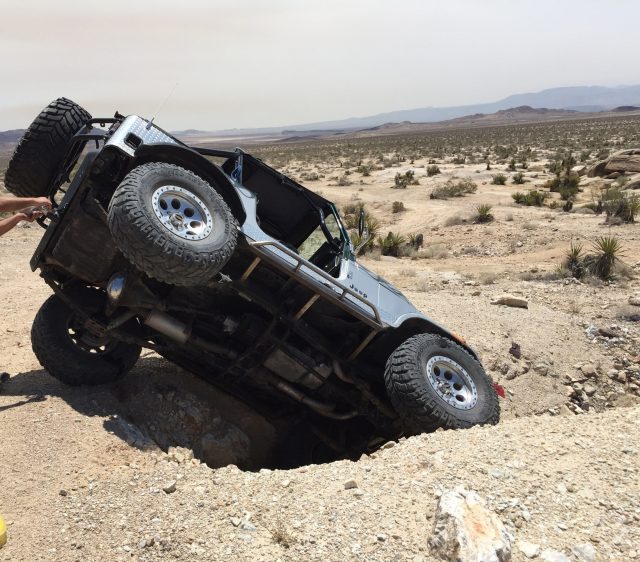Time for a little short-but-sweet tough love. Four-wheeling involves near constant decision making. Numerous challenges face you along the trail. Whether you successfully navigate around or through those obstacles falls entirely on your shoulders.
Sorry, my friend, but you can’t blame anyone else. Not your spotter. Not your mechanic. Not the fellow camper who messed up breakfast that morning.
Some 99% of all mistakes are caused by the driver. (The remaining 1% can be blamed on “testosterone poisoning.” But I’ll leave that for another article.)
It all boils down to:
Your assessment: How well you evaluated the obstacle.
Your decision (“go” or “no go”): Most obstacles can be overcome. But sometimes you need to back away.
Your execution: How well you implement the driving techniques required to successfully negotiate around or through that obstacle.

Follow the fundamentals of four-wheeling:
Four-wheeling offers unique circumstances every moment. Sure, city driving has its hazards – screaming police vehicles, major road construction, zombie cab drivers, an occasional pile up. But you get used to those. Off road, it’s a different story. You have to learn to expect the unexpected. And act accordingly.
Because every situation is unique, there are no “cookbooks” to guide you. Adhering to sound principles and executing properly will ensure a successful 4WD adventure.
All driving involves getting from Point A to Point B. Four-wheeling sets itself apart by constantly challenging drivers. For simplicity, I use the word obstacles to refer to all challenges. Understand that doesn’t mean just a large boulder. It could be a blind curve on a hillside. Or a narrow passageway through a brush-shrouded canyon.
You first must recognize the obstacle. That involves doing the recon. Four-wheeler’s don’t reconnoiter enough. My mantra is, “recon, recon, recon.”

Often that involves getting out of the vehicle and checking out the scene. Sometimes you can’t see well enough through the windshield. Get out and walk up to the top of the hill or down to bottom of slope. Whatever the situation calls for.
Next, decide on your path. That is, pick the line. Every obstacle off road has to be analyzed. Determine the best route to take; there could be more than one. You’re looking for the one best suited to your vehicle.
How to pick the best line:
As you analyze the situation, consider these four factors.
- All four wheels must remain on the ground. If on a slope or mountainside, the vehicle could pitch slightly. Minimize the pitching or sideways sliding so all four wheels are available to you.
- Verify clearance on all sides. Any rock outcroppings, branches, brush, or ruts that could hang up or damage your vehicle? Don’t look in just one direction. Consider all angles: overhead, underneath and from either side.
- Maintain traction. If driving on soft surfaces, adjust accordingly. You may have to air down, for example. Like point #1 above, you want to keep all four wheels working for you.
- Use appropriate throttle. Don’t go too fast or too slow. A good rule of thumb is: Go as slow as possible but as fast as necessary. Maintain that momentum.

Four-wheeling involves diligence on the driver’s part. From assessing the situation to making the decision to executing. It’s all about using the fundamentals properly. You as the driver are responsible for the successful execution of the trip. Keep driving, and over time you will develop the necessary skills.
As those skills develop, you will routinely make sound assessments and prudent decisions, and successfully execute those decisions.
P.S. While we’re on the subject of decision making: For god’s sake, never try to help retrieve stuck vehicles by hanging or climbing on them. It is very hazardous to your health. We have safer ways to free them.
















